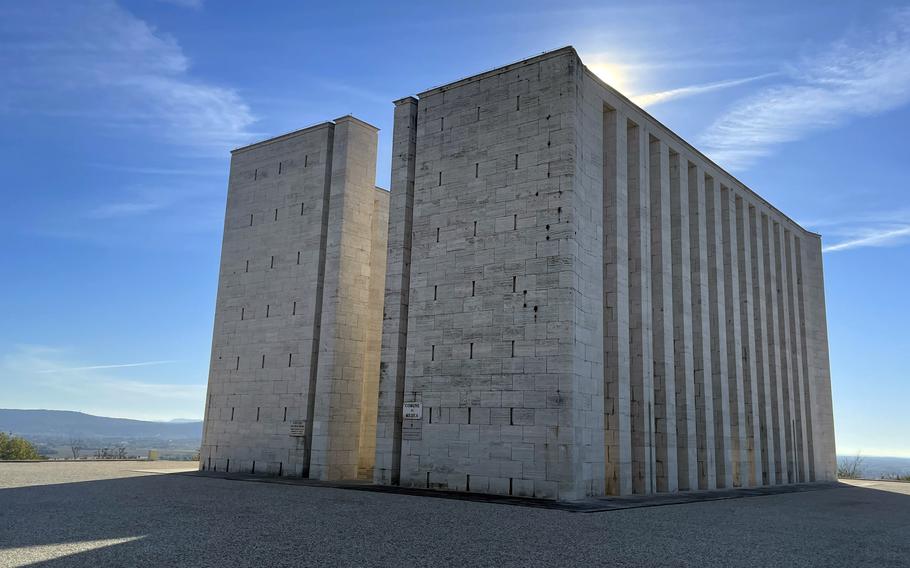
The sun rises behind the Ara Pacis Mundi in Medea, Italy, on Nov. 5, 2024. Its name translates to Altar of World Peace. Marble pillars surround an altar containing an urn with soil from various war cemeteries and water samples from four seas. (Brian Erickson/Stars and Stripes)
War memorials around the world tend to be country-specific in honoring the fallen, but a magnificent hilltop monument in the Italian city of Medea breaks the mold by also paying homage to peace.
Built shortly after World War II, the Ara Pacis Mundi commemorates soldiers who have died in all wars. Its name translates to Altar of World Peace.
Pictures don’t do justice to the spectacle of the more than two dozen 45-foot-tall marble pillars, which afford visitors a panoramic view of the Isonzo River plain.
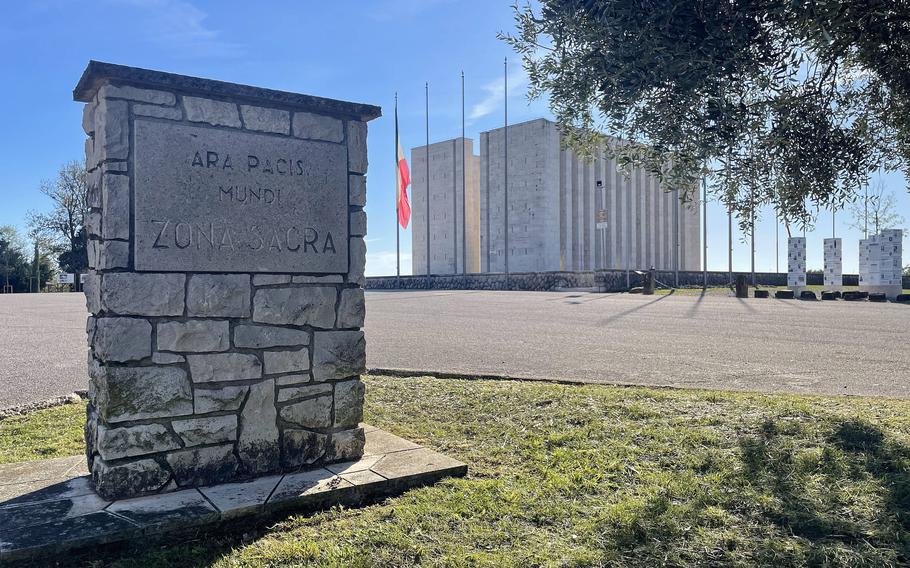
The Ara Pacis Mundi in Medea, Italy, on Nov. 5, 2024. The structure was built in 1951 to commemorate soldiers who died in all wars. (Brian Erickson/Stars and Stripes)
In World War I, the Isonzo Front was the scene of two years’ worth of fighting between the armies of Italy and the Austro-Hungarian Empire. The carnage was horrendous, with about 500,000 killed.
Besides the Ara Pacis Mundi, which is just a little over an hour’s drive from Aviano Air Base, the surrounding area has numerous stops along the Walk of Peace, a 143-mile hiking trail running from Slovenia to the Italian city of Trieste. It passes through Gorizia, about 20 minutes by car from Medea.
I recently made a solo trip to the altar of peace and spent about four hours soaking up the experience, which included other sights in the park that encompasses the monument.
The pillars frame the altar, which is made of porphyry rock and measures 9 feet by 15 feet. On the front of it is the inscription “L’odio produce morte, l’amore genera vita,” meaning “Hate produces death. Love generates life.”
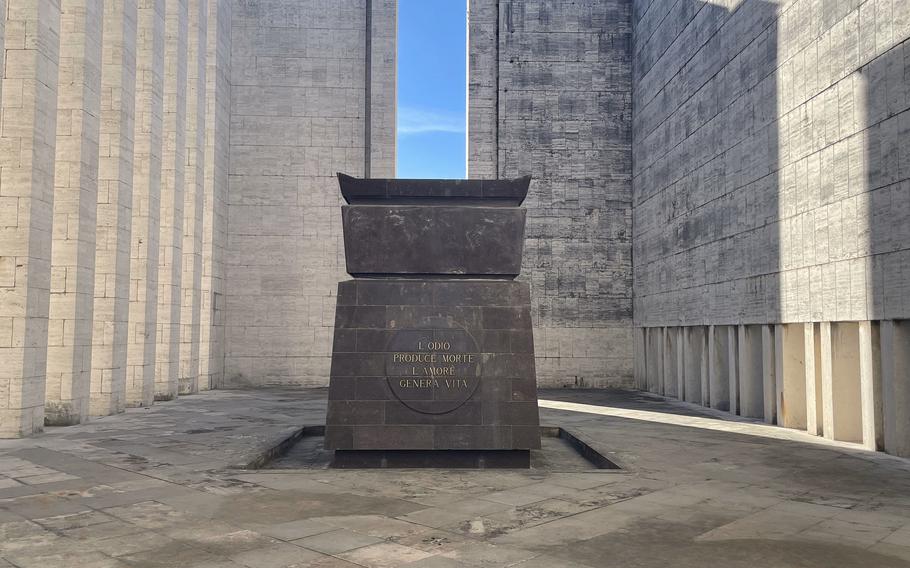
The altar in the center of the Ara Pacis Mundi in Medea, Italy. The inscription on the front reads “L'odio produce morte, L'amore genera vita,” which in English means "Hate produces death. Love generates life.” (Brian Erickson/Stars and Stripes)
But it’s what underneath the altar that made the most profound impact for me. An urn constructed of wood and bronze contains dirt from over 800 war cemeteries worldwide and water samples from the Mediterranean, Tyrrhenian, Adriatic and Ionian seas, where both Italian and foreign ships have sunk in battle.
After giving due attention to the monument, I set out on the 2.5-mile-long loop trail through Collie di Medea municipal park.
Along the way, I glimpsed Saint Anthony’s Church, which was built in the 18th century and sits at the end of a 343-step stone staircase built in 1815. But the construction fencing surrounding the church prevented me from getting a good look at it.
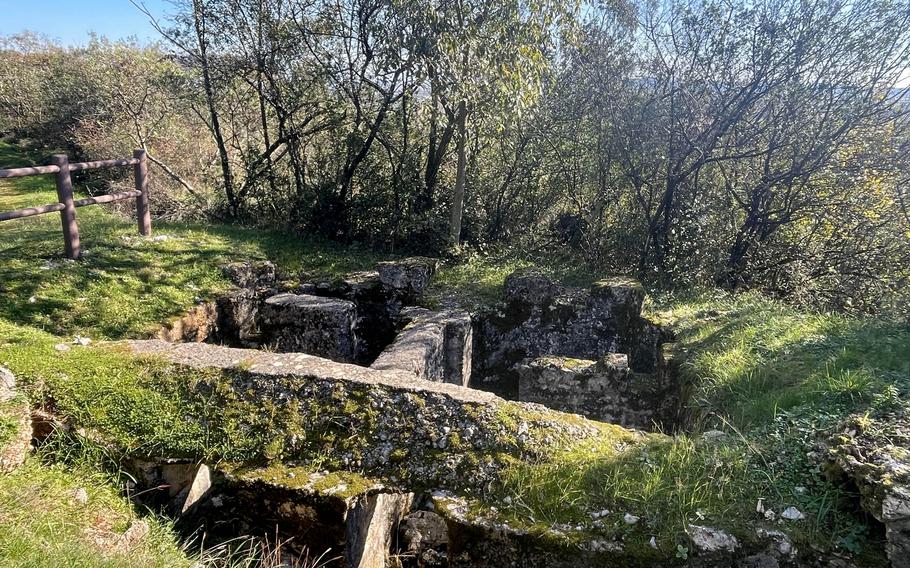
The remains of a trench built during World War I near Collie di Medea municipal park in Medea, Italy. The trench can be seen along a loop trail in the park, which also features the impressive Ara Pacis Mundi memorial. (Brian Erickson/Stars and Stripes)
Originally a military road from 1915, the path around the park took me past stone trenches built by soldiers during the Great War as well as an old surveillance post now known as the King’s Observatory.
From this commanding height, King Victor Emmanuel III followed the battle against the Austrians. Unfortunately, I didn’t make it there to take in the view because my footwear didn’t hold up on the muddy, uneven path. If you check it out, plan accordingly.
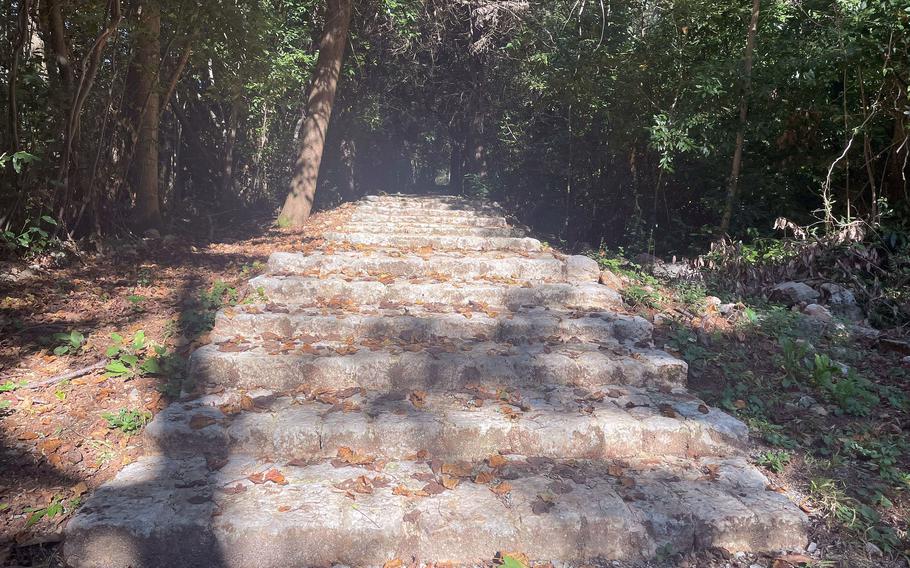
A small portion of a 343-step staircase in Collie di Medea municipal park in Medea, Italy. The stone staircase was built in 1815 and leads to an 18th-century church. (Brian Erickson/Stars and Stripes)
Nevertheless, I got a decent workout and am hoping to return and complete the loop with appropriate shoes.
For children, there is a small playground in a picnic area near the church. Visitors who pack a lunch to enjoy during their hike will find this spot suitable. There are also a couple of places to eat in Medea.
But just 15 minutes away are the Palmanova Outlet Village and the Tiare shopping center in Villesse, both of which have an assortment of food options.
Medea also has a visitor information center at Via Torriani 5. It is open Mondays and Wednesdays from 10 a.m. to 12:30 p.m. and 4-6 p.m., and on Fridays from 10 a.m. to 12:30 p.m. On Tuesdays, Thursdays and weekends, it’s closed.
Information
Address: Salita all’Ara Pacis, Medea, Italy
Hours: Around the clock, seven days a week
Cost: Free
Information: Online: tinyurl.com/36tdpkmw